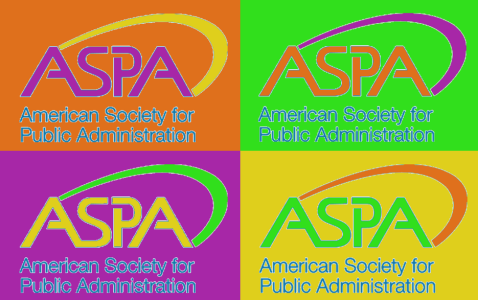Widgetized Section
Go to Admin » Appearance » Widgets » and move Gabfire Widget: Social into that MastheadOverlay zone
Paradoxes of Complementarity in Public Administration: Part 6 – Reconciling ASPA in the Public Interest
The views expressed are those of the author and do not necessarily reflect the views of ASPA as an organization.
By Erik Devereux
April 25, 2024

This is the sixth and final column on paradoxes among theories of public administration that inhabit three distinct levels of analysis—constitutional/institutional, organizational and personnel (first column, second column, third column, fourth column, fifth column). Complementarity in this context refers to how our subject of scientific investigation, a public administration, can evidence contradictory properties simultaneously. This column concludes the series by discussing how complementarity pertains to ASPA itself.
Soon after I became APPAM’s executive director in early 1999, one of my mentors and his PhD student wrote a seminal paper on defense procurement using an innovative dataset. When I lobbied the authors to submit the paper to JPAM, they politely declined in favor of PAR, noting how PAR reached the influential practitioners they sought for an audience. That was the first time in my rather limited prior exposure to ASPA when someone I greatly admired for their research had promoted PAR in this manner to me.
About seven years after that, I finished high up in the search ASPA conducted for an executive director which resulted in Toni Samuel’s appointment. (As an aside, I couldn’t hold a candle to Toni – she was far more qualified for the job.) During the search process, ASPA sent me documents that detailed the lengthy (and ongoing) struggles of the organization to reconcile its two primary aspirational identities: as the forum for research on public administration and as an association home for public administrators in practice. To be frank, these two identities have not always wanted to interact fruitfully. This is how a pseudo-alternative public management emerged as a research field with its own societies and several journals.
Where this tension is often most evident is at the ASPA conference every spring. I have been to several across the space of decades and every time it is like attending two conferences occurring in the same place, one for researchers and one for practitioners. What is occurring at the conference is a form of complementarity – ASPA is exhibiting contradictory properties as its two communities attend one meeting. You might think that because the researchers teach in the MPA programs which have educated a large share of the practitioners that there might be more interaction in both directions. Instead, the practitioners often do not engage the same problems that occupy the attention of the researchers and the researchers often do not appreciate how practitioners share insights with their peers.
To a lesser degree, this same dichotomy is evident in the pages of the PA Times. I have come to recognize that practitioners truly cherish and benefit from the articles that itemize a wide range of lessons from experience in topics such as IT modernization, DEI and leadership. Those coming from the research side have doubts about the evidential basis for such insights. There is strong potential for ASPA to be a steward that brings both sides to the table to have valuable conversations which might better infuse practitioner insights into research and gently prod practitioners to understand why researchers have their doubts.
We are learning right now that the stakes surrounding ASPA’s struggles with its own complementarity are much higher than most might have presumed even six months ago. Our field has been divided internally. We have not pushed forward toward a stronger foundation that can help worldwide in the effort to promote effective, efficient, responsive public administration. We now mostly are standing on the sidelines as a brutally destructive effort is underway that seems intent on moving government in the U.S. back to how it was in 1929. After I moved to Chicago last summer, I read three phenomenal books about the city’s history. One of those books had pages of photos of what happened on the streets of Chicago after the start of the Great Depression. I don’t know about you but I strongly object to the view that what America needs is the government it had in 1929.
ASPA should be a factor in a renewed commitment to American public administration across this country. To get there, our community needs to embrace and understand its complementarity and then leverage that to greatest effect. We can be a community that fosters excellence both in research and in practice by refusing to allow those contradictions to persist. Instead, to use another analogy from quantum physics, ASPA needs to ensure that research and practice become permanently entangled while in pursuit of legitimating and expanding the place of public administration in civil society.
Author: Erik Devereux is Teaching Associate Professor in the Department of Public Policy, Management, and Analytics at the University of Illinois-Chicago. He has a B.S. from the Massachusetts Institute of Technology (Political Science, 1985) and a Ph.D. from the University of Texas at Austin (Government, 1993). He is the author of Methods of Policy Analysis: Creating, Deploying, and Assessing Theories of Change (available for free here). Email: [email protected]. More content is available here.


Follow Us!